November saw the last of the anthology shipped out and the final prep work for Winter 2020. Let’s look at what the numbers were like.
Archives
Categories
-
November saw the last of the anthology shipped out and the final prep work for Winter 2020. Let’s look at what the numbers were like.
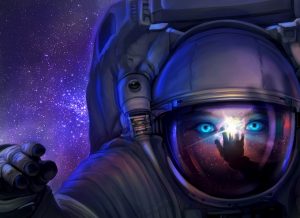 Our MSJ alumni have been busy, with even more new publications!
Our MSJ alumni have been busy, with even more new publications!
Cliff Winnig has a story in the recently published Straight Outta Deadwood from Baen Books.
Author Matt Moran has published a game called A Bitter Gambit, a rules-light game of sword and sorcery.
Patrick Hurley recently had his story, “Whispers in the Garden,” reprinted at Frozen Wavelets. And he’s not the only one of our alumni that Frozen Wavelets has published–Deborah Davitt, Stewart C. Baker, Anatoly Belilovsky, and co-editor Dawn Vogel also have poetry in the first issue of Frozen Wavelets!
Andrew K. Hoe, who will have a story in the final issue of Mad Scientist Journal, has an essay on monster movement in the December 2019 issue of ParABnormal.
Andrew K. Hoe also has a story in the recently released Young Explorer’s Adventure Guide (volume 6), which also includes stories from Wendy Nikel, Holly Schofield, Deborah Walker, and co-editor Dawn Vogel!
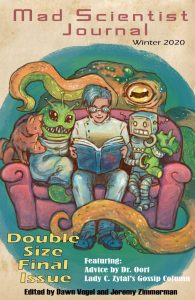 Disaster photography, mental health assistance from unlikely sources, and talented velociraptors. These are but some of the strange tales to be found in this book.
Disaster photography, mental health assistance from unlikely sources, and talented velociraptors. These are but some of the strange tales to be found in this book.
Mad Scientist Journal: Winter 2020 collects thirteen tales from the fictional worlds of mad science. For the discerning mad scientist reader, there are also pieces of fiction from Maureen Bowden, Amanda Cherry, Sam Crane, Madison Estes, Larry C. Kay, K. Kitts, Fiona Moore, George Nikolopoulos, Mere Rain, Darren Ridgley, dave ring, J. Rohr, Holly Saiki, Connor Sassmannshausen, Alyssa N. Vaughn, Chris Walker, and Cliff Winnig. Readers will also find other resources for the budding mad scientist, including an advice column, gossip column, and other brief messages from mad scientists.
Authors featured in this volume also include Joachim Heijndermans, Genevieve McCluer, Nick Morrish, Cory Swanson, Arnout Brokking, Franko Stephens, Megan Dorei, Judith Field, Rain E. Day, Holly Schofield, Blake Jessop, Michael M. Jones, Andrew K. Hoe, Han Adcock, C. R. Anderson, E.D.E. Bell, Andy Brown, James Cummins, Lillie Franks, Joan Hudak, Alexander Nachaj, Edward Punales, Angelica Rosenthal, Sophie Sparrow, Johnny Townsend, DJ Tyrer, Lucinda Gunnin, and Sean Frost. Art provided by Leigh Legler, Luke Spooner, Errow Collins, Scarlett O’Hairdye, America Jones, and Justine McGreevy.
Buy it now at:
An essay by Jackie Rivera, as provided by Traci Castleberry
Art by Errow Collins
From across the cobbled street, I watched the rag-clad girl who huddled on the leeward side of the Dolphin Inn. She held one trembling palm extended toward a passing gentleman. “Spare a copper, mister?” The man, like all the other passers-by gave the girl a wide berth, especially when she let out a barrage of coughs.
She was perfect for what I needed. The difficulty breathing was bad enough to be indicative of pneumonia or consumption, either of which would probably kill her soon. From the livid red scar and the fused fingers clutching at the collar of her worn dress, she’d been burned, and not all that long ago. No one would miss her, and she was near enough to death that if she passed on, I wouldn’t feel bad.
My missing hand itched as it always did when I was excited. I wound my way through the crowd and crouched in front of her, ignoring the stares of those walking past. “Spare a copper, mister?” she asked me.
I touched the knuckles of my good hand to my cap. “Morning, miss. I don’t have a copper, but I do have a hot bowl of stew to fill your belly and a nice warm bed to rest in.”
It was hard to make out her expression beneath her dirt-stained face, but her eyes widened as she gazed suspiciously at me. “I don’t have nothing you want. I got the consumption. Ain’t fit to lie with.”
“I don’t want to lie with you.” I held out my hand. “I’m just trying to be gentlemanly and help the less fortunate.”
“You ain’t no gentleman.”
I inhaled sharply, wondering if this pathetic urchin had guessed the truth I hid beneath my jacket and trousers. Then again, those near death were often delusional. “It’s your choice. Come with me or stay out here in the cold.” A night on the streets of Whitby was nothing to wish for with the constant threat from the sailors, traders, and dockworkers, as well as the bitter sea wind that almost never stopped.
Another round of coughing left her bent double. When the fit ended, I saw defeat in her eyes. She was so worn and tired that any risk would be better than enduring another moment begging on the street. She accepted my hand. I had to help her rise as she stood on unsteady legs. The poor girl was barefoot, her feet black and thick with calluses, and she shivered when I put an arm around her waist for support. She was hot, feverish, and I wondered more than once if she’d make it to my dwelling, which was not in Whitby proper but hewn into the cliffs below.
There were still a couple of functioning alum mines up north in Boulby, but for the most part the ones in Whitby had been abandoned, leaving me the ideal place to hide. The only time I feared trouble was when overzealous scientists had discovered the fossilized skeleton of a gigantic crocodile and incited searches for more. There were also those searching for veins of jet, the black mineraloid locals carved into crosses and beads and other jewelry. Men and boys scoured the cliffs after each high tide and storm, looking for any veins that might have been exposed. Fortunately, few came near my mine, and when they did, I scared them away with strange noises, letting them think the place haunted.
The main entrance had been sealed up, but I’d found another hidden beneath an overhang, which made it all but invisible from above or below. It was here I guided the girl, who by then had nearly collapsed from exhaustion. I had to catch her when she stumbled, though having her half delirious was to my benefit. The less she was aware of, the less she could reveal later–if she lived to say anything at all.
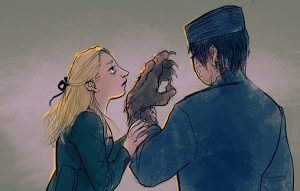
It was a frightening, ugly thing, covered with the bristled fur of a boar and bearing claws as sharp as a hawk’s.
To read the rest of this story, check out the Mad Scientist Journal: Autumn 2019 collection.
Jackie Rivera was born in Batavia to a Chinese mother and Portuguese father and speaks a half dozen languages fluently. Jackie has traveled the seas as a pirate, escaped from being a prisoner of war, studied Chinese medicine to become an alchemist and acupuncturist, and isn’t afraid of a damn thing.
Traci Castleberry lives in southern Arizona with two cats and a Lipizzan mare. She’s been published in numerous anthologies, is a graduate of Clarion, Taos Toolbox, and is a first reader for The Magazine of Fantasy and Science Fiction.
Errow is a comic artist and illustrator with a predilection towards mashing the surreal with the familiar. They pay their time to developing worlds not quite like our own with their fiancee and pushing the queer agenda. They probably left a candle burning somewhere. More of their work can be found at errowcollins.wix.com/
“Poor Girl” is © 2015 Traci Castleberry
Art accompanying story is © 2019 Errow Collins
This story originally appeared in Daughters of Frankenstein.
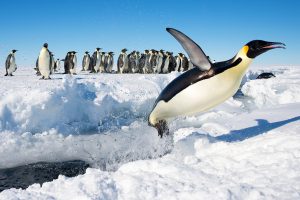
Antarctica (https://www.flickr.com/photos/cmichel67/11235945713/) CC-by-2.0 (https://creativecommons.org/licenses/by/2.0/)
A paleontologist in New Zealand has found fossilized penguin bones that indicate the existence of a penguin as tall as a human.
Crossvallia waiparensis is the name given to this newly discovered species, which features leg bones that indicate this penguin’s feet were more involved in swimming than those of modern penguins.
Scientists also believe that this penguin species shows connections between New Zealand and Antarctica. You can read the summary here or the scientific article here.
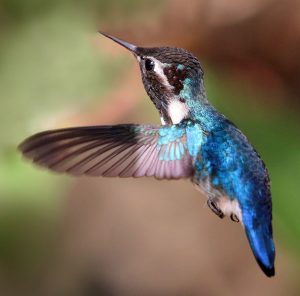
Charles J. Sharp (http://www.sharpphotography.co.uk/) CC-by-sa-4.0 (https://creativecommons.org/licenses/by-sa/4.0/)
If you enjoyed this week’s story about unusual birds, you might also enjoy these stories!
“Cryptoid Sonics: An Investigation into the Use of Cryptozoological Sounds” by Andy Brown (considerations of cryptids for military and other applications) (available in MSJ Spring 2018)
“The Wing Collector” by H. Pueyo (an unusual species of bird and the person who collects them) (available in MSJ Winter 2018)
“Excerpts from the Diary of Theodore Miro” by Zach Bartlett (hunting and cooking the chicken-legged hut of Baba Yaga) (available in MSJ Winter 2018)
“The Observer’s Paradox” by Judith Field (an unusual species of bird and the woman he protects) (available in MSJ Autumn 2017)
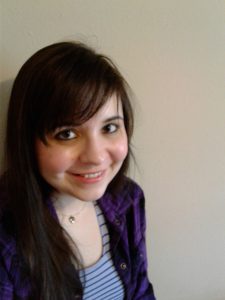 Today, we’re chatting with Madison Estes, who will have a story in the final quarterly for MSJ!
Today, we’re chatting with Madison Estes, who will have a story in the final quarterly for MSJ!
DV: Tell us a bit about yourself!
Madison Estes: I’m a horror addict who comes from a family of horror fans. My dad and I went to Las Vegas this year so we could do the Saw Escape Room, which was one of the coolest and most intense experiences of my life. Several of the rooms are duplicates of traps from the movies, and they got Tobin Bell to do narration in each room. My mother and I went to Texas Frightmare several years ago and we got to meet some of the Saw stars, plus Robert England, Sid Haag, and Sean Patrick Flannery. With two parents who are horror fans, I had a lot of horror influences growing up. I remember the crypt keeper from Tales from the Crypt used to scare me, but when I got a little older I’d watch reruns of it whenever I could, in addition to The Twilight Zone and The Outer Limits. Like most contemporary horror writers, I read a lot of Stephen King when I was growing up, starting with The Girl Who Loved Tom Gordon, which is still one of my favorites. I also read On Writing sometime in the fifth grade. It helped me connect with literature in a way that I hadn’t before, and I believe it shaped me into the writer that I am today.
I live in southeast Texas and I have three dogs, two black and white Chihuahuas, a boy and a girl (Leo and Mayhem), and a Shih Tzu named Mika. When I’m not writing, I’m usually snuggling with them and reading or watching movies. In addition to my obsession with horror, I’m a huge nerd for Harry Potter, Star Wars, Marvel, DC and some of the old school anime shows like Yu Yu Hakusho.
DV: You’ve got a story coming out in February in Strange Girls: Women in Horror Anthology that sounds like it will be of interest to our readers. What can you share about your story without giving too much away?
ME: My story “Revival” is about a medical student who believes the cadaver he was assigned to dissect is coming back to life. He’s grieving the loss of his sister and suffering from nightmares and sleep deprivation, so he’s not mentally stable. He doesn’t trust his own judgement, but since he couldn’t save his sister, he’ll stop at nothing to save this girl if she really can be saved.
DV: You’re also working on a horror writing guidebook with other authors. Tell us more about this project.
ME: I’m working with five other writers on The Complete Guide to Writing Horror Vol. 1, commissioned by Dragon Moon Press. I’m in charge of five chapters, which cover topics such as horror subgenres, horror basics, the history of horror, business etiquette, and market resources. At the moment, I’m still working on subgenres. I’m designing this chapter to help writers learn how to categorize their own writing, and to give them an idea of what is out there so they can find their niche or niches within the horror genre.
In the basics chapter, I’m covering character struggles, decisions, consequences, and other related topics. One subject of special interest to me is character agency. I feel that in horror stories, character agency is often lacking. It’s tempting to write a passive, reactive character in a genre where the villain is often the star, but characters should have some control over their lives, or at least the appearance of control, even if by the end of the story you’re going to pull the rug from under the reader and reveal the characters had little to no chance at all. Think about the movies In the Mouth of Madness, Knowing, or Cabin in the Woods. The main characters in these stories are active. They fight back, but more than that, they ask questions and investigate. Even if they fail, they make efforts to take control of their lives. It makes stronger characters and a more entertaining story than a character that only runs from the maniac with the knife.
In the business etiquette chapter, I cover topics such as communication and conflict management with editors, and how to write cover letters, query letters, author bios, and more. Market resources covers topics such as networking opportunities, horror writing conventions, critique groups, where to find submission calls, and a list of active horror publishers. I haven’t started writing the history chapter yet (please don’t tell my editor!), but I plan to cover the origin of horror and the movements that have shaped the genre, such as the invention of film, video games, and the internet, as well as how certain authors like Stephen King forever changed horror.
I’ve very excited about this project. I can’t wait to share my knowledge and help aspiring horror writers. It takes me back to being in fifth grade with On Writing and the way that book filled me with excitement for writing. I hope to not only help writers elevate their craft, but to inspire that feeling within them as well.
DV: What’s the coolest thing about being an author?
ME: When I go on Amazon and read a review from someone who enjoyed my story, or when a book blogger reviews an anthology I’m in and singles out my story as one of their favorites, it gives me a warm and fuzzy feeling. It makes all the hours of writing and revising worth it.
DV: What’s on the horizon for you?
I just had a short story called “Crossroads” featured in Horror USA: California (Soteira Press) about an actor who goes through a midlife crisis when his girlfriend gets pregnant. His mental stability and fears of fatherhood are worsened by his Porsche, a haunted car that carries a terrible secret. I recently published my first paranormal romance/erotica story in The Devil’s Doorbell (HellBound Books) called “Visions of Blood”. A psychic has visions whenever he touches people or certain objects, but it comes with a side-effect of searing pain. A beautiful vampire convinces him to use his ability to help her track down the vampire who murdered her friend. Sexual tension leads to some very creative sex scenes between them despite the character’s disability.
My short story “Servant of Death” is going to appear in the last issue of Mad Scientist Journal. It’s about a child dying from cancer who is stalked by a shadow creature that he perceives to be Death. After he escapes the grim reaper’s clutches, his cancer goes away, but when he grows up, he finds out that remission came with a price.
I have a short story coming out next year in a time-themed anthology by Transmundane Press. My story is called, “The Time Loop Loophole”. It’s a horror comedy about a guy trapped in a time loop who thinks the only way to escape may be to kill his best friend. The premise sounds really dark, but the story is mostly humorous. The main character is kind of a self-described loser. At the beginning of the story, his biggest regret about being in the time loop is not being able to finish his video games or see the ending of Game of Thrones (a blessing in disguise according to most fans, not that he could know that). He’s not even that bothered by the time loop until the girl he has a crush on starts showing interest in him. Secrets come out, and everything gets complicated as he starts to wonder just what he’s willing to do to be with the girl of his dreams.
Thanks, Madison!
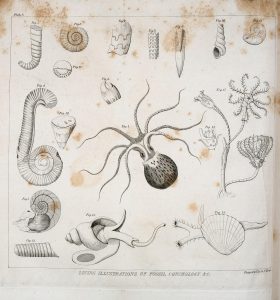
Flickr Commons (https://www.flickr.com/photos/internetarchivebookimages/14781825424/)
If you’re looking for a collection of science facts, check out these archived Science Facts of the Day. Though this project seems to have ended in 2012, there’s still a ton of great information included here that could be used for trivia or education, or just for something to read if you’ve got some free time!
The same website did a Weekly Science News feature in 2015 with even more cool science facts. So although it’s a few years old, there’s even more awesome stuff to find on this site!
An essay by Luisa Sontag, as provided by George Salis
Art by Leigh Legler
“If thy heart were a nest, thou would begat many birds.” –The Purloined Philosophia by Boris of Aventaria
There has been much controversy, even mythology, surrounding the so-called “nidificant manuscript.” A few notables, including the biolinguist Norman Mast, have clamored to call it “an anachronistic masterpiece of scientific literature” (34), suggesting it has been passed down to us from the future, or an alternate past. Many others have deemed the work “a hoax of adolescent caliber” (Mare 25). But by studying the work and delineating its influence on human society, we can say that the truth exists somewhere between fantastic worship and ignorant dismissal. First of all, we know that this some 1,600-page manuscript was composed in the early 19th century by the naturalist, or “supernaturalist,” Erasmus Karl, and details the existence of a species of bird-human that inhabits an archipelago called the Beak-born Islands. A number of its pages include baroque maps of the islands in question, along with illustrations of alien flora and fauna and, most importantly and prominently, the winged beings themselves.
This year marks the 150th anniversary since the first bottle, containing a page of Karl’s manuscript, was discovered, specifically between the pincers of a bleached crab on the coast of Budva, Montenegro. This, the method in which Karl “published” the manuscript, has only added to the idiosyncrasy that has either converted or disgusted relevant experts. Each and every page was rolled into its own bottle and cast into the sea. During the intervening century and a half, around a dozen bottles washed ashore on all countries with a seaside (their contents now published en masse for the first time). The bottles were molded with aid of fire from a translucent shell later identified in the manuscript as a “Clay Conch, a most copious & convenient Resource of Nature.” Ascertaining the location of the archipelago based on the appearance of the bottles has proved to be impossible, and the results obtained by oceanographers inexplicably suggest that the islands are capable of nautical mobility, like a flock, perhaps with occasional murmurations. Because bottled pages are still being discovered almost every month, the nidificant manuscript is most definitely incomplete, its prospective length up for debate. Some have purported that an infinite number of bottles will find their way to land, that they will continue to do so far after human civilization is but dust.
~
The Wind Calleth: A Brief Biography of Erasmus Karl
Before I begin my exploration of the manuscript and its influence on human society, I find it necessary to relate what is known of Erasmus Karl’s life. Born in the Netherlands circa 1770, his mother was appalled at newborn baby Karl’s full head of white feathery hair, his thin, elongated body, and the downy web between his taloned fingertips. She blamed the sins of the unknown father, while others whispered that Karl’s appearance was the byproduct of a professionally prurient mother. Regardless of their origin, the unfortunate mutations condemned Karl as an outcast, something to be shooed, ogled, or at best tolerated. It wasn’t long until young Karl despised his reflection, taking extreme measures to change it, as is written in his unpublished journals. First he shorn his hair, which highlighted his teardrop-shaped skull, then he filed his fingernails, sometimes with such desperation that he exposed and bloodied the nail beds, and finally he searched for a type of glove that could hide the finger webbings. Deeming the search futile, he excised the vein-thin skin as if it were the film on a Dutch custard. He bled profusely the first time, but afterward it was merely a matter of maintaining the V-shaped scabs.
Aside from his repelling physical characteristics, Karl was a relatively normal and healthy young boy, until, later in school, he became obsessed with nests, spurred by one he had witnessed being constructed outside his bedroom window. He was amazed to see it built with not just twigs and leaves, but clothespins, apple slices, strands of a stranger’s hair, the string from a cup-and-ball, and other miscellaneous objects. The peculiarity of it inspired him to craft his own nests, which he planted, waiting for random birds to make them home. Impatient, he began to track down authentic nests in trees and the nooks of buildings and replace them with his synthetic ones. Some of his nests resembled the real thing, while others were of odd shapes, pyramids and Klein bottles, or made from strange materials, such as quasicrystals and gaseous gelatins. He was compelled to record the birds’ reactions to their new homes. Some of them simply moved elsewhere, while others were driven to infanticide, either eating their younglings or dashing their unhatched shells against rocks. He was further horrified to discover that sphere-shaped nests of chlorophyll caused the birds’ wings to deteriorate into stubs but was later pleased to determine that alabaster dodecahedrons produced birds with wingspans up to five feet. Other nests also seemed to have a positive effect, causing the inhabitants to sing more beautifully, to love their chirping chicks more so than ever before.
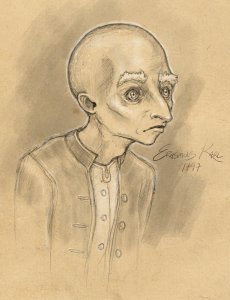
It wasn’t long until young Karl despised his reflection, taking extreme measures to change it, as is written in his unpublished journals.
To read the rest of this story, check out the Mad Scientist Journal: Autumn 2019 collection.
Luisa Sontag holds multiple PhDs from a variety of universities. Her wide range of knowledge is reflected in her published work. For example, her essay on time’s golden spiral shape was published in Quark, her research on the gene-popping of rare squids was featured in Subaquatic Studies, and her six-volume history of vanished continents was published by Samurai Books. Up until his death, she was collaborating with Stephen Hawking on a book about theoretical flora and fauna titled A Brief Visit to Neighboring Planets. Dedicated to Hawking, it is scheduled to be published next year.
George Salis is the award-winning author of Sea Above, Sun Below (forthcoming from River Boat Books, 2019). His fiction is featured in The Dark, Black Dandy, Zizzle Literary Magazine, The Sunlight Press, Unreal Magazine, and elsewhere. His criticism has appeared in Isacoustic, Atticus Review, and The Tishman Review, and his science article on the mechanics of natural evil was featured in Skeptic. He is the editor of The Collidescope and is currently working on an encyclopedic novel titled Morphological Echoes. He has taught in Bulgaria, China, and Poland. Find him on Facebook, Goodreads, and at www.GeorgeSalis.com.
Leigh’s professional title is “illustrator,” but that’s just a nice word for “monster-maker,” in this case. More information about them can be found at http://leighlegler.carbonmade.com/.
“In Communion with the Invisible Flock: Erasmus Karl and the Nidificant Manuscript” is © 2019 George Salis
Art accompanying story is © 2019 Leigh Legler

Public domain (http://www.nasa.gov/mission_pages/nustar/multimedia/pia16695.html)
Astronomers at Ohio State University recently captured data about what happens when a black hole destroys a star.
The astronomers say that a black hole actually destroying a star is a rare phenomenon, for which the conditions must be perfect. If the star is too close, the black hole will only consume the star. If the star is too far, it will bounce off the black hole and spin out into the galaxy.
In this particular case, data from a NASA satellite looking for new planets collected the data that indicated the black hole was about to destroy a star. This allowed astronomers to know where and when to look. You can read more about it here!